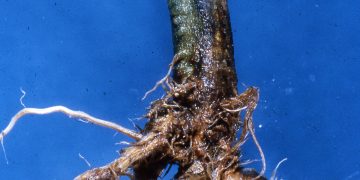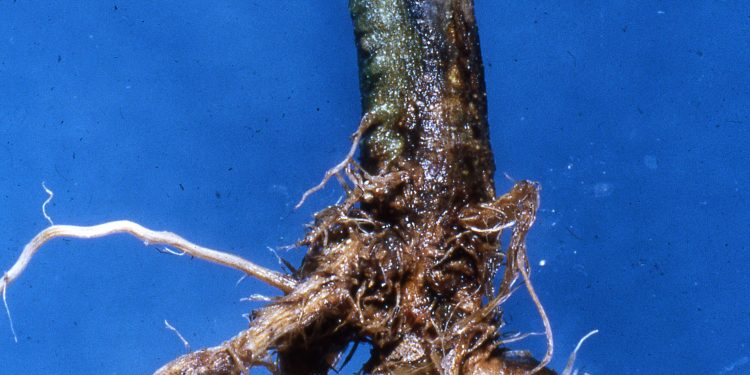#PlantDisease #CropManagement #IntegratedPestManagement #Sustainability
Fusarium crown rot, caused by various species of the fungal genus Fusarium, is a serious and common disease affecting a wide range of crops worldwide. The disease can lead to significant yield losses and quality reduction, posing a major threat to agricultural productivity and food security.
Fusarium crown rot can infect plants through the roots or wounds, colonizing the crown and causing necrosis and wilting of the leaves and stems. The pathogen can survive in soil and plant debris for several years, making it difficult to control.
To combat Fusarium crown rot, integrated management strategies that combine cultural practices, chemical treatments, and resistant cultivars are recommended. Crop rotation, avoiding plant stress, and maintaining good soil health can reduce the disease incidence. Fungicides can be used preventively, but their efficacy may vary depending on the Fusarium species and the timing and method of application. Breeding and selecting resistant cultivars can also be effective, although this approach may take time and require extensive research and testing.
The consequences of the development of Fusarium crown rot can be severe, affecting crop yield and quality, as well as the economic and social well-being of farmers and communities. The disease can also have environmental impacts, as increased use of fungicides and other inputs may lead to pollution and biodiversity loss.
Understanding and combating Fusarium crown rot is crucial for sustainable and resilient agriculture. By adopting a holistic and proactive approach that integrates different strategies and involves stakeholders at all levels, we can reduce the incidence and impact of this devastating disease.































